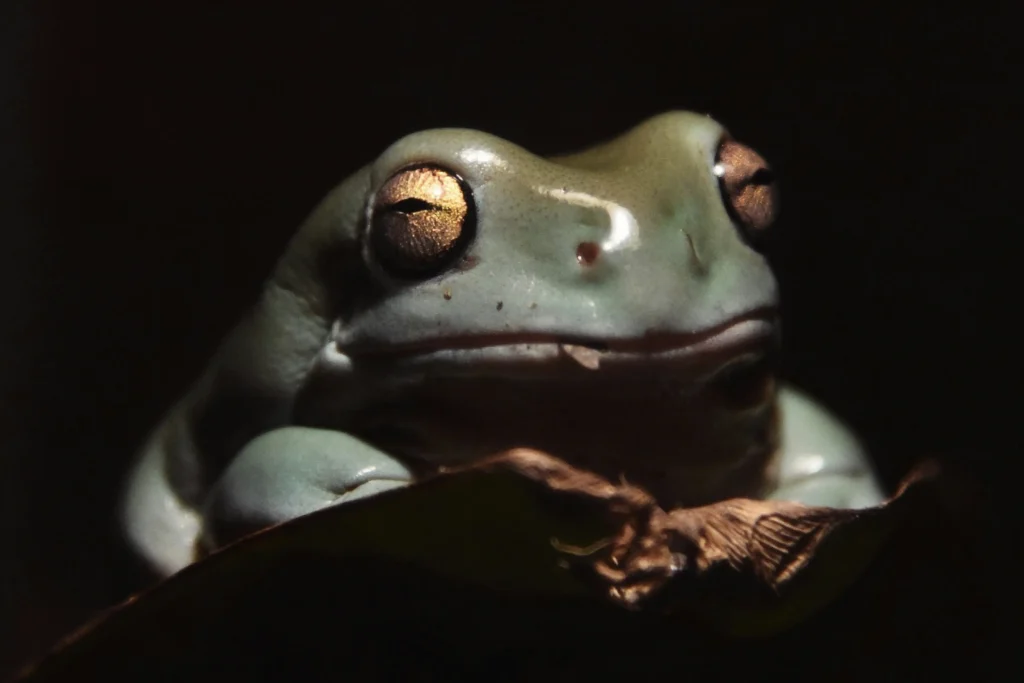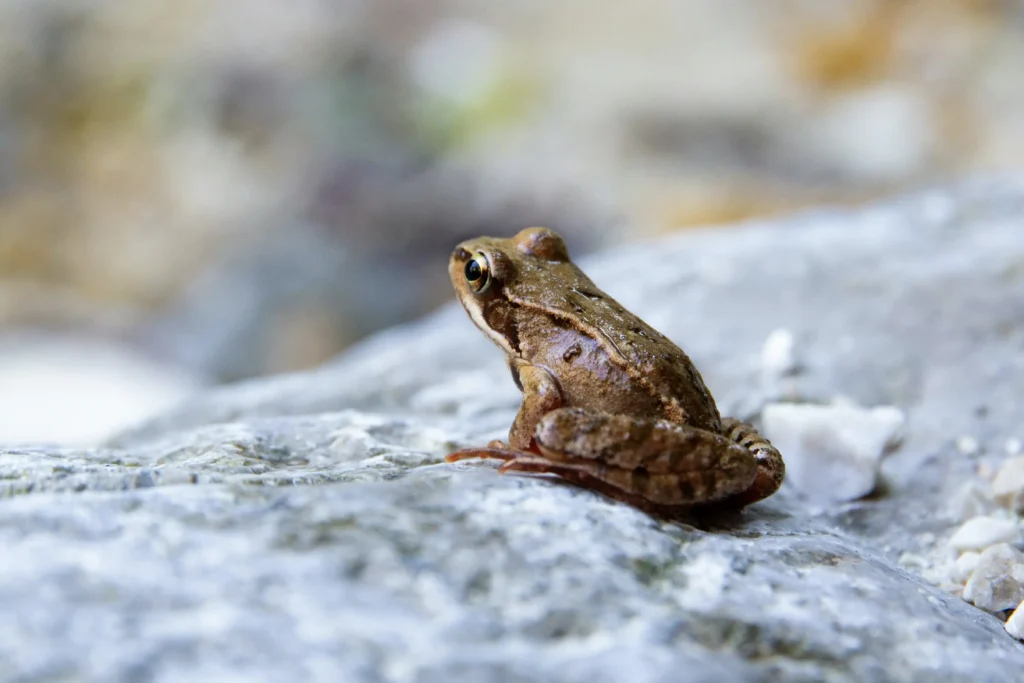Owning a frog may appear to be an unconventional choice for most people, but surprisingly, they make great companions for those seeking a unique pet. Here is a guide to keeping a pet frogs!
Frogs are a long-term commitment, with an average lifespan typically ranging from 4 to 15 years, though some species have been known to live even longer. The three species mentioned in this article are approved by NParks to be kept as exotic pets in Singapore.
Introduction to Frogs
The Australian Green Tree Frog (Litoria Caerulea)

Nicknamed the “Dumpty Tree Frog,” this species is often admired for its cute, cartoonish features. These frogs are typically green, but some rare individuals may exhibit shades of blue or yellow due to their lack of pigmentation. With a lifespan of up to 16 years and the ability to grow up to 10cm long, they are considered docile and easy to care for. Like all frogs, the Green Tree Frog produces a loud ribbiting call, with males being notably noisier than females due to their mating calls.
American bullfrog (Lithobates Catesbeianus)

American bullfrogs, originally from North America, were imported into Singapore. These frogs have greenish-brown or greyish-brown colouring with a green head and can be identified by the circular eardrums on the sides of their heads. Bullfrogs earned their name because their croak resembles the loud mooing of a cow or bull!
Crab-eating frogs (Fejervarya Cancrivora)

Crab-eating frogs, as their name suggests, consume small crabs, insects, and other small crustaceans as part of their diet. They typically have greyish-brown colouring, irregular blackish blotches, and yellowish stripes on their sides, and produce a distinctive loud rattling call.
Care and maintenance of frogs
To ensure your frog thrives, it is best to replicate its natural habitat. Setting up an appropriately sized tank or terrarium with suitable substrate such as large gravel, bark pieces, or soil is essential. Avoid using small gravel or bark that your frog could ingest. The tank or terrarium should be kept warm, humid, and have a well-ventilated cover.
Provide a large, shallow dish of water for your frogs to soak and rehydrate in. Avoid using tap water directly on your frogs and instead, let tap water sit in an open container at room temperature for 48 hours before use. Alternatively, use bottled water (not distilled).
Depending on the species, frogs have specific dietary preferences, but they generally eat insects like crickets and mealworms. Crab-eating frogs consume small crabs and other crustaceans, while American bullfrogs are voracious eaters that will consume anything that fits into their mouths. Live prey can be purchased at pet stores.
Before introducing a new frog to its tank or terrarium, it is recommended to quarantine it for at least 14 days to prevent the spread of contagious diseases. Frogs have sensitive skin, so wash your hands thoroughly with warm water before handling them. If you plan to have multiple frogs, keep them within the same species. It is advisable to separate a new frog into a different enclosure for a few months to ensure it is disease-free before introducing it to other frogs. Female frogs can lay about 1000 eggs at once, leading to numerous tadpoles and eventually more frogs. To avoid this, it is best to keep all your frogs the same gender.
Common Health Issues to be aware of when keeping pet frogs
There are various reasons as to why frogs can become ill, such as;
- Fungal infections
- Bacterial infections
- Salmonellosis
- Viruses etc
It is crucial to keep their tank clean and provide them with the necessary nutrients for growth. Monitor your frog’s appearance and behaviour daily for signs of illness that may require a visit to an amphibian veterinarian, including:
- Not moving from the same position for an hour
- Loss of appetite
- Looks bloated
- Pale skin
- Abnormal behaviour and disposition
- Difficulty in moving, jumping or catching prey
- Changes in appearance, such as sores or lumps on the body
- Signs of injury
Legal considerations when keeping pet frogs
In Singapore, many species of wild animals cannot be kept as pets due to government regulations. The country is a member of The Convention on International Trade in Endangered Species of Wild Fauna and Flora (CITES) since November 1986. However, NParks (AVS), the authority that enforces CITES regulations, allows the keeping of these three frog species as pets.
These species can only be sold by pet shops or farms defined by the Animals and Birds (Pet Shop and Exhibition) Rules and the Animals and Birds (Licensing of Farms) Rules, or by a licensed importer under the Animals and Birds Act. Pet owners must comply with the Code of Animal Welfare for pet owners, including providing care and feeding with an appropriate diet. Releasing frogs into the wild or reservoirs is illegal as it may disrupt the ecosystem. If you are unable to care for your frogs, consider re-homing them with a responsible owner.
Benefits of keeping pet frogs
There are numerous advantages to having frogs as pets: – They are some of the easiest pets you can own. They are relatively low maintenance as they are independent once you set up their habitat. – Frogs do not take up much space. They are kept in their tank or terrarium unless moved for tank cleaning. This means they are suitable for owners living in apartments or individuals in limited space. – Frogs can also be an educational pet, especially for children and those interested in biology and nature. Observing their distinct behaviours, such as leaping and climbing and catching prey with their long tongues, can provide insights into how they live in the wild, allowing you to develop a deeper appreciation and understanding of nature.
Conclusion
In conclusion, frogs are great pets for people looking for companionship with minimal maintenance and interactions. They are not for everyone especially if their croaks may bother you. Be sure you do proper research on the type of frogs you plan to own and their dietary requirements. Adopt from licensed pet shops or farms, and do not bring home one from the wild. If unconventional yet unique pets are something you are looking for, consider a pet frog!
Reference links:
https://www.lightoflifeveterinaryclinic.com/the-chelonians-amphibians https://www.nparks.gov.sg/avs/animals/wildlife-and-endangered-animals/keeping-of-wildlife-as-pets

